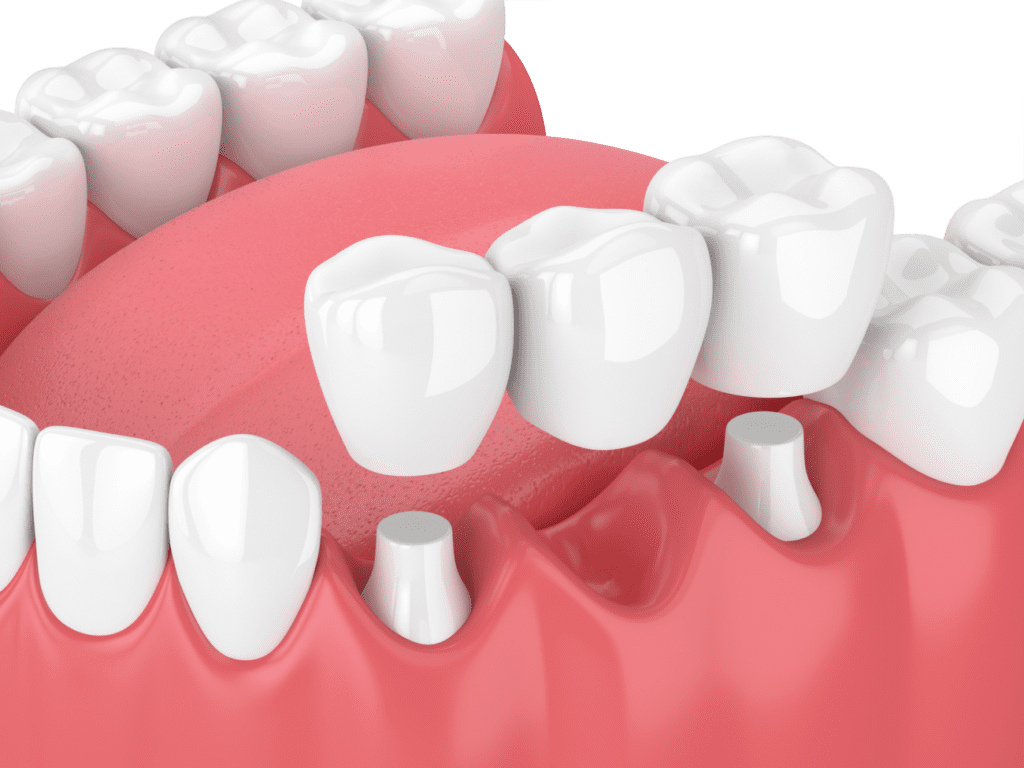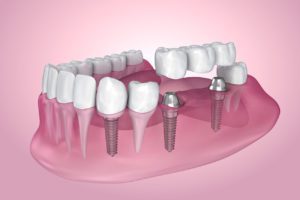Dental bridges are the perfect option for the common dental problem of missing teeth. A dental bridge is essentially two crowns on either end of a false tooth, called a pontic. Two crowns or abutments anchor it in place, which we place on the teeth next to your missing tooth. We then attach a custom-made porcelain or resin piece to the abutments to fill the gap where the missing tooth used to be.
Cosmetic & Advanced Dentistry is your home for complete dental care. We provide dental services to residents from many communities, including Towson, MD. Dr. Ed Lazer and Dr. Andrey Doroshenko along with our professional dental team offer dental bridges for people missing one or more teeth.
If you have missing or damaged teeth but don’t need a denture, we will use a fixed bridge or an implant-supported bridge to replace them. Bridges are just one of the restorative dentistry services we provide in Towson, and Baltimore County, Maryland.
What is a Dental Bridge?
A dental bridge is a set of artificial teeth that sit in a row between two crowns. We use it to replace a single missing tooth or several consecutive missing teeth. Several types of bridges are available to accommodate different cases. A traditional bridge has two dental crowns on each end with the pontic (the piece that actually replaces the missing tooth) located in the middle.
Dentists have various types of dental bridges available. Each provides a full range of motion and chewing capabilities that closely mimic real teeth.
A Maryland Bridge
The Maryland bridge is a dental appliance that replaces one or more missing teeth. It can consist of porcelain, metal, or acrylic and attaches to the teeth on either side of the space where the tooth is missing. A Maryland bridge will not only give you a beautiful smile but also improve your speech and chewing ability.
A metal framework supports the pontic that the dentist bonds to the back of the adjacent teeth. A dentist can secure a Maryland Bridge in place by using two attachments: one at each end of the bridge. We call them abutments, and they are usually metal or porcelain.
The abutment on the outside part of your mouth will have a post that goes through your gum tissue. Then, it will attach to the implant post behind your jawbone. The dentist secures the other attachment to your natural tooth on either side of the space where there’s no tooth in place.
A cantilever Bridge
This type of bridge only uses one crown that a dentist cements to an adjacent tooth to hold the piece in place. The cantilever dental bridge is a type of bridge that uses an artificial tooth as an anchor at one end and cantilever-like arms on the other.
The artificial tooth acts as a fixed anchor while the arms act as movable anchors. The artificial tooth anchors the teeth at a fixed point, while the movable end can adjust to accommodate changing occlusion. A cantilever dental bridge might cost less than other options because it has fewer parts to work with.
An implant-supported Bridge
The implant-supported dental bridge is a type of dental restoration that replaces missing teeth with artificial teeth. It uses an implant to support the artificial tooth in place. In this case, it does not attach to adjacent natural teeth. Instead, it attaches to an implant or false tooth on one side and a natural tooth on the other side.
We can also use only dental implants to secure the fixture. Our dentists can place two dental implants, one on either side, to secure it. This way, your dentist will not have to reduce healthy surrounding teeth to place a permanent bridge.

Fixed Bridges vs Implant Supported Bridges
Fixed Bridges
A fixed bridge is different from an implant-supported bridge in many ways. Our dentist often uses a fixed bridge to replace a single missing tooth. We can replace more than one tooth using this type of restoration. However, the longer the bridge, the less stable it is.
A traditional fixed bridge requires the use of the two remaining teeth adjacent to the gap to hold it in place. Most bridges use two adjacent teeth as anchors. We will have to significantly reduce the anchor teeth, just as if we are placing a dental crown on them. Those anchor teeth will endure more stress because of this process.
Implant Supported Bridges

A dental implant-supported bridge is capable of successfully replacing two or more teeth. Our dentist places two or more dental implants in the jaw bone to hold the bridge more securely in place. Because of this, you will not need to reduce healthy teeth or endure extra stress on your mouth.
Additionally, the dental implants will replace the missing teeth roots. This prevents bone loss from occurring in the jaw bone which is something a fixed bridge cannot prevent. However, you have to be free of periodontal disease to qualify for an implant-supported bridge.
The experts at Cosmetic & Advanced Dentistry offer full services for dental implant supported bridges. With both types of restorations, the bridge looks natural and blends in nicely with the rest of your smile. Cosmetic & Advanced Dentistry also provides restorative dental treatments in Towson and Owings Mills, Maryland. We offer the following treatments:
Frequently Asked Questions
We have answers to some of the most frequently asked questions concerning dental bridges.
Can dental bridges affect my speech?
Yes, a dental bridge can temporarily affect your speech when you first get it. You might find certain words harder to pronounce as you adjust to the new appliance in your mouth. However, with a little practice, your speech should quickly return to normal.
Will a dental bridge improve my bite?
Absolutely! By filling the gaps left by missing teeth, a dental bridge can significantly improve your bite. It helps distribute chewing forces evenly, making eating more comfortable and preventing undue stress on your other teeth.
Does food get stuck under a dental bridge?
Sometimes, food particles can get trapped under a dental bridge. It’s important to maintain good oral hygiene by cleaning around the bridge carefully. Using special floss or interdental brushes can help keep the area clean and prevent issues like decay or gum disease.
Can I get a bridge years after extraction?
Yes, you can get a dental bridge even years after a tooth extraction. However, your dentist will need to assess the condition of your mouth, as bone loss or shifting teeth may affect the treatment plan. It’s never too late to restore your smile and function.
Can a dental bridge shift or become loose?
<Yes, over time, a dental bridge can shift or become loose, especially if the supporting teeth weaken or develop decay. Regular dental exams are essential to monitor the bridge and ensure it remains secure. You should contact our office today if you notice any movement or discomfort.
Are dental bridges removable?
Traditional dental bridges are fixed in place and aren’t removable. They’re cemented onto your existing teeth or implants. However, there are removable options called partial dentures, which we can take out for cleaning. Your dentist can help determine which type is best for you.
Call Cosmetic & Advanced Dentistry Today
Not sure which dental bridge is right for you? Contact Cosmetic & Advanced Dentistry today to schedule an oral health consultation. You will meet with one of our expert restorative dentists, Dr. Doroshenko or Dr. Lazer. They will examine your teeth and explain which solution is best for you. Our patients from Towson, MD, can reach us at (410) 697-6290 to begin their tooth replacement journey.
